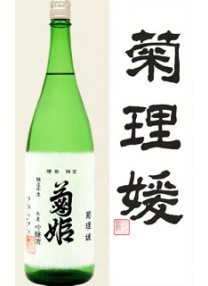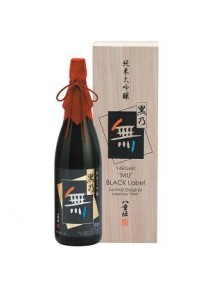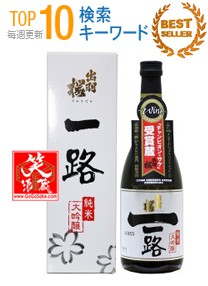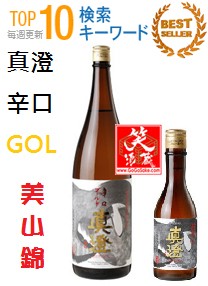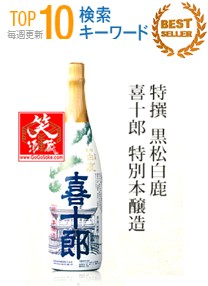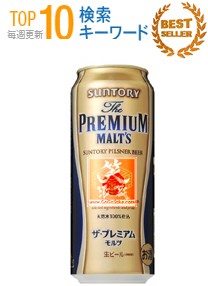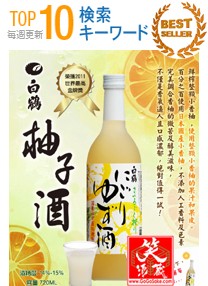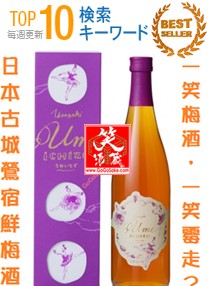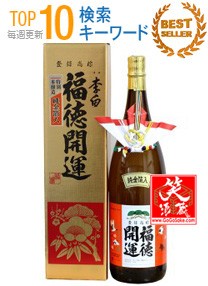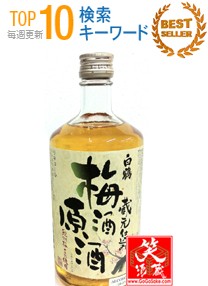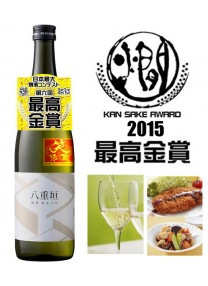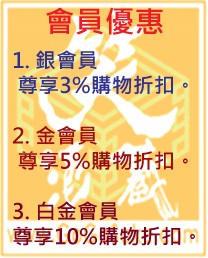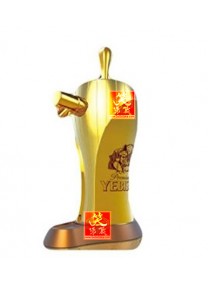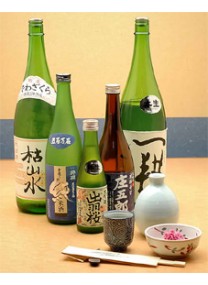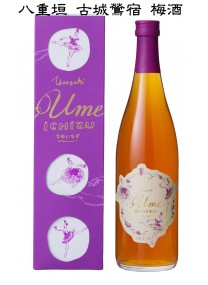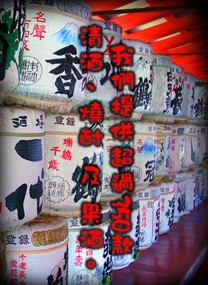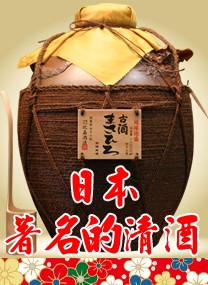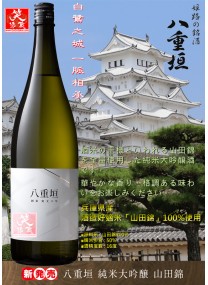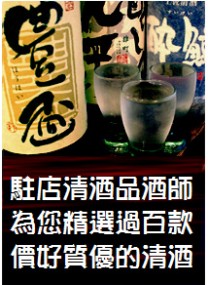您的購物車沒有添加商品!
商品分類
熱買商品
付款方法


![]()
專有名詞 1
Amakuchi【甘口】
Sake that tastes sweeter than neutral.
Sake that tastes sweeter than neutral.
Amami【甘味】
Sweetness. One of the five flavours known as go-mi.
Sweetness. One of the five flavours known as go-mi.
Amazake【甘酒】
A sweet, non-alcoholic drink made from koji, rice and water, which is saccharified but not fermented.
A sweet, non-alcoholic drink made from koji, rice and water, which is saccharified but not fermented.
Arabashiri【あらばしり】
The sake that is obtained from the first pressing of the fermentation mixture sometimes sold separately under this name.
The sake that is obtained from the first pressing of the fermentation mixture sometimes sold separately under this name.
Aru-ten【アル添】
Sake to which brewer’s alcohol has been added; non-junmaishu.
Sake to which brewer’s alcohol has been added; non-junmaishu.
Atsukan【熱燗】
Piping hot sake.
Piping hot sake.
Choko (o-choko)【猪口(お猪口)】
Small ceramic cups from which sake is drunk, often used in conjunction with a small ceramic flask called a tokkuri.
Small ceramic cups from which sake is drunk, often used in conjunction with a small ceramic flask called a tokkuri.
Daiginjoshu【大吟醸酒】
Sake made from rice polished to less than 50% of its original size, fermented at low temperatures.
Sake made from rice polished to less than 50% of its original size, fermented at low temperatures.
Fune【槽】
A large box (usually wooden), used for pressing moromi and separating lees from the fresh sake.
A large box (usually wooden), used for pressing moromi and separating lees from the fresh sake.
Futsushu【普通酒】
Literally translated as ‘regular sake’, this term is given to sake that does not fall into one of the special designations such as junmaishu orhonjozoshu.
Literally translated as ‘regular sake’, this term is given to sake that does not fall into one of the special designations such as junmaishu orhonjozoshu.
Genmai【玄米】
Unpolished rice; brown rice.
Unpolished rice; brown rice.
Genmaishu【玄米酒】
Sake made from unpolished rice.
Sake made from unpolished rice.
Genshu【原酒】
Undiluted sake. While most sake has water added to bring the alcohol content down from around 20% to around 16%, some does not have water added, and is known as genshu.
Undiluted sake. While most sake has water added to bring the alcohol content down from around 20% to around 16%, some does not have water added, and is known as genshu.
Ginjoka【吟醸香】
A term used to describe the refined aromas of ginjoshu.
A term used to describe the refined aromas of ginjoshu.
Ginjoshu【吟醸酒】
Sake made from rice polished to less than 60% of its original size, fermented at low temperatures.
Sake made from rice polished to less than 60% of its original size, fermented at low temperatures.
Go-mi【五味】
The five representative flavours that are sometimes used as a framework for assessing sake: sanmi, amami, karami, shibumi andnigami.
The five representative flavours that are sometimes used as a framework for assessing sake: sanmi, amami, karami, shibumi andnigami.
Goseiseishu【合成清酒】
Literally translated as ‘synthetic refined sake’, this term refers to beverages that attempt to replicate sake without rice. These were most popular when rice was scarce after World War II, but can still be found today.
Literally translated as ‘synthetic refined sake’, this term refers to beverages that attempt to replicate sake without rice. These were most popular when rice was scarce after World War II, but can still be found today.
Guinomi【ぐい呑み】
A vessel from which sake is drunk, usually larger than an o-choko.
A vessel from which sake is drunk, usually larger than an o-choko.
Hi-ire【火入れ】
The sake pasteurization process.
The sake pasteurization process.
Hine-ka【老香】
This means ‘aged smell’, and refers to the aroma produced when sake matures. It can have a negative connotation, suggesting that the drink is deteriorating rather than maturing.
This means ‘aged smell’, and refers to the aroma produced when sake matures. It can have a negative connotation, suggesting that the drink is deteriorating rather than maturing.
Hirezake【ひれ酒】
Literally translated as ‘fin sake’, this is sake that has the grilled fin of a blowfish added to provide a distinctive flavour.
Literally translated as ‘fin sake’, this is sake that has the grilled fin of a blowfish added to provide a distinctive flavour.
Hiyaoroshi【ひやおろし】
Sake that has been pasteurized only once, as opposed to twice in the case of most sake. It is usually ready for drinking in the autumn of each year.
Sake that has been pasteurized only once, as opposed to twice in the case of most sake. It is usually ready for drinking in the autumn of each year.
Hiya (hiyazake)【冷(冷酒)】
Sake that is served at below room temperature. Also referred to as reishu.
Sake that is served at below room temperature. Also referred to as reishu.
Honjozoshu【本醸造酒】
Sake made from rice, koji, water, and a little alcohol.
Sake made from rice, koji, water, and a little alcohol.
Ichigo【一合】
A measure usually considered to be one serving of sake, equal to approximately 180 milliliters, roughly one masu’s worth of sake.
A measure usually considered to be one serving of sake, equal to approximately 180 milliliters, roughly one masu’s worth of sake.
Isshobin【一升瓶】
A 1.8-litre bottle of sake.
A 1.8-litre bottle of sake.
Itto【一斗】
A measure equal to eighteen litres, or ten times the volume of issho.
A measure equal to eighteen litres, or ten times the volume of issho.
Ittobin【一斗瓶】
An eighteen-litre bottle, equal in volume to ten isshobin; freshly pressedsake is often allowed to settle in this kind of vessel.
An eighteen-litre bottle, equal in volume to ten isshobin; freshly pressedsake is often allowed to settle in this kind of vessel.
Izakaya【居酒屋】
An informal drinking establishment, found commonly in Japan, which offers a selection of small Japanese dishes to accompany sake.
An informal drinking establishment, found commonly in Japan, which offers a selection of small Japanese dishes to accompany sake.
Jizake【地酒】
A term that came into fashion in the 1970s that literally means ‘local sake’, but whose exact meaning is often somewhat vague. Often refers to sake that has been produced in a smaller brewery using local ingredients.
A term that came into fashion in the 1970s that literally means ‘local sake’, but whose exact meaning is often somewhat vague. Often refers to sake that has been produced in a smaller brewery using local ingredients.
Jomai【蒸米】
Steamed rice; the rice-steaming process.
Steamed rice; the rice-steaming process.
Jozo【醸造】
The sake-pressing process.
The sake-pressing process.
Junmaishu【純米酒】
Sake made only from rice, koji, and water. This is pure sake.
Sake made only from rice, koji, and water. This is pure sake.
Kakemai【掛米】
Steamed rice which is added to the fermenting moromi.
Steamed rice which is added to the fermenting moromi.
Kan (o-kan, kanzake)【燗(お燗、燗酒)】
A general term for warmed sake.
A general term for warmed sake.
Kanpai【乾杯】
The Japanese equivalent of ‘cheers!’
The Japanese equivalent of ‘cheers!’
Kanzukuri【寒造り】
The practice of brewing sake only during the winter months. Although some larger breweries now work all year round, the majority still maintains this practice, which began during the Edo period.
The practice of brewing sake only during the winter months. Although some larger breweries now work all year round, the majority still maintains this practice, which began during the Edo period.
Kaori【香り】
The smell or fragrance of sake.
The smell or fragrance of sake.
Karakuchi【辛口】
Sake that tastes dryer than usual.
Sake that tastes dryer than usual.
Karami【辛味】
Dryness or spiciness. One of the five flavours known as go-mi.
Dryness or spiciness. One of the five flavours known as go-mi.
Kasu【糟/粕】
Called ‘lees’ in English, this is the name given to the unwanted residue left behind after the fermented sake mixture has been pressed.
Called ‘lees’ in English, this is the name given to the unwanted residue left behind after the fermented sake mixture has been pressed.
Kijoshu【貴醸酒】
This is a sweet and heavy sake made by replacing some of the water with sake during production, somewhat similar to the making of port wine.
This is a sweet and heavy sake made by replacing some of the water with sake during production, somewhat similar to the making of port wine.
Kikizake【きき酒】
This means sake tasting in general, but often refers to the appreciation of sake at professional sake tasting events.
This means sake tasting in general, but often refers to the appreciation of sake at professional sake tasting events.
Kimoto【生酛】
Literally meaning ‘live moto’, this term refers to a yeast starter that has been made using an old fashioned, laborious and time-consuming method, the yamahai method being one example of this.
Literally meaning ‘live moto’, this term refers to a yeast starter that has been made using an old fashioned, laborious and time-consuming method, the yamahai method being one example of this.
Kinshoshu【金賞酒】
This means ‘gold prize sake’, and refers to a sake that has been awarded a gold prize in the annual zenkoku shinshu kanpyokai, or National New Sake Appraisal Competition.
This means ‘gold prize sake’, and refers to a sake that has been awarded a gold prize in the annual zenkoku shinshu kanpyokai, or National New Sake Appraisal Competition.
Kobo【酵母】
Yeast.
Yeast.
Koji【麹】
Rice cultivated with kojikin; used in every stage of sake production.
Rice cultivated with kojikin; used in every stage of sake production.
Koji-kin【麹菌】
A mould, the Latin name for which is Aspergillus oryzae, used in sake production to break down starches in steamed rice into fermentable sugars.
A mould, the Latin name for which is Aspergillus oryzae, used in sake production to break down starches in steamed rice into fermentable sugars.
Koku【石】
Originally a measure of rice equal to one thousand masu, or about 380 kilogrammes, for sake, a measure equal to one hundred isshobin, or about 180 litres.
Originally a measure of rice equal to one thousand masu, or about 380 kilogrammes, for sake, a measure equal to one hundred isshobin, or about 180 litres.
Koshiki【甑】
A large vat, traditionally wooden, in which rice for sake brewing is steamed.
A large vat, traditionally wooden, in which rice for sake brewing is steamed.
Koshu【古酒】
Literally ‘old sake’, meaning sake that has aged or matured.
Literally ‘old sake’, meaning sake that has aged or matured.
Kuchiatari【口当たり】
The flavour and impression just as the sake hits the tongue and palate.
The flavour and impression just as the sake hits the tongue and palate.
Kura【蔵】
Sake brewery.
Sake brewery.
Kurabito【蔵人】
Sake brewery worker(s).
Sake brewery worker(s).
Kyubetsu seido【級別制度】
The obsolete (abandoned in April 1989) sake classification system assigning a tokkyu 特級 (top class), ikkyu 一級 (first class), or nikyu 二級 (second class) ranking, along with requisite tax increases to the price of a bottle of sake.
The obsolete (abandoned in April 1989) sake classification system assigning a tokkyu 特級 (top class), ikkyu 一級 (first class), or nikyu 二級 (second class) ranking, along with requisite tax increases to the price of a bottle of sake.
Masu【升】
A small wooden box traditionally used for measuring rice and drinking sake.
A small wooden box traditionally used for measuring rice and drinking sake.
Miyamizu【宮水】
The name given to water found in the Nada district of Kobe, Hyogo prefecture, which is said to be particularly suited to sake brewing.
The name given to water found in the Nada district of Kobe, Hyogo prefecture, which is said to be particularly suited to sake brewing.
Moto【酛】
Also known as shubo, the yeast starter. A mixture of rice, koji, yeast, and water in which an extremely high concentration of yeast cells is cultivated. See also shubo.
Also known as shubo, the yeast starter. A mixture of rice, koji, yeast, and water in which an extremely high concentration of yeast cells is cultivated. See also shubo.
Mushimai【蒸し米】
The rice-steaming step of sake production. See also jomai.
The rice-steaming step of sake production. See also jomai.
Namazake【生酒】
Unpasteurized sake.
Unpasteurized sake.
Nigami【苦味】
Bitterness. One of the five flavours known as go-mi.
Bitterness. One of the five flavours known as go-mi.


